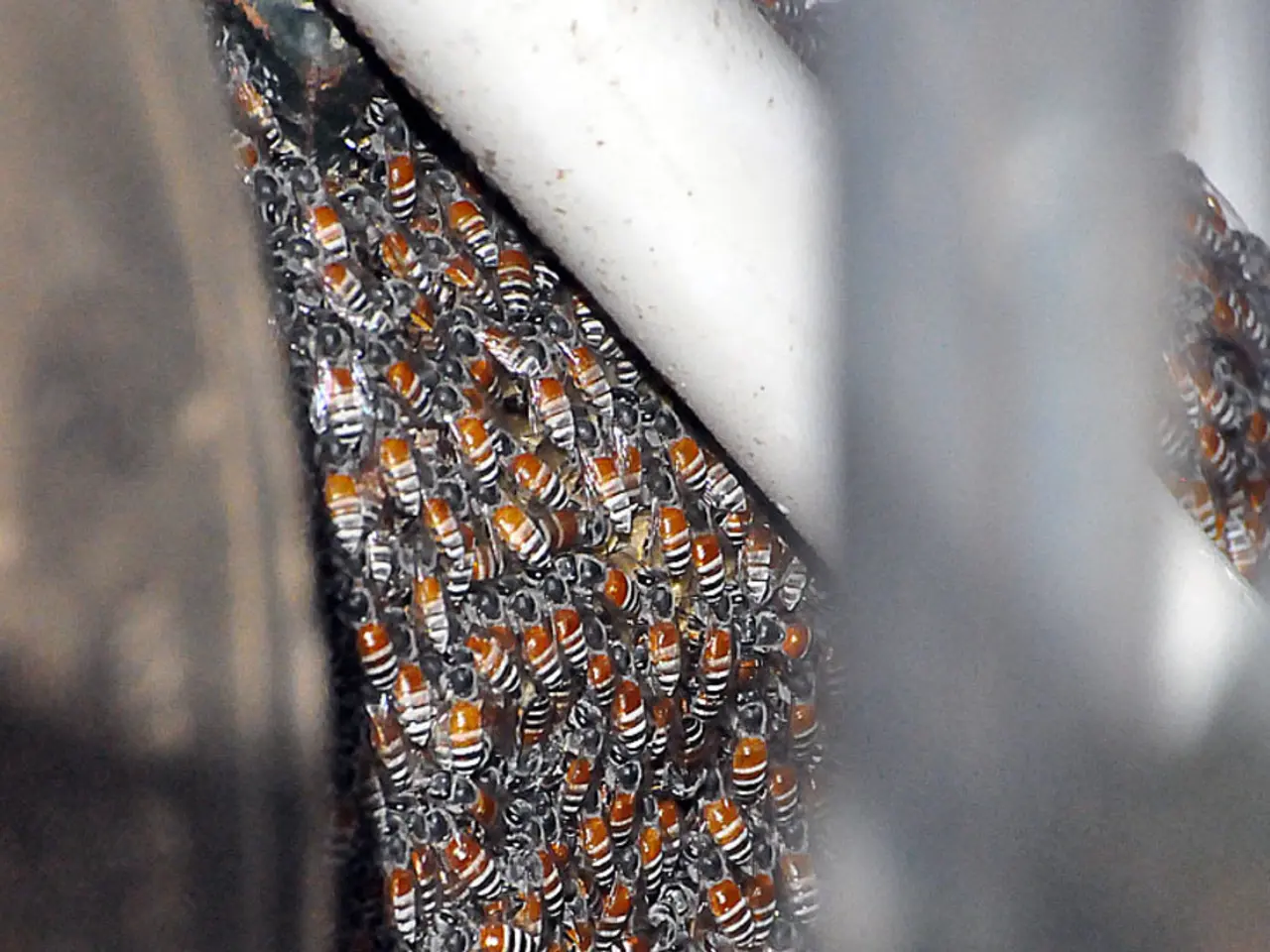Comparing Price and Value in Manuka Honey: Ensuring Quality and Authenticity While Shopping
In the world of honey, Manuka honey stands out as a premium product, commanding a higher price than regular honey. This article delves into the factors that contribute to Manuka honey's high cost and justify its premium value.
Produced primarily in New Zealand and parts of Australia from the nectar of the Manuka tree (Leptospermum scoparium), Manuka honey's limited supply is one of its key defining features. The flowering period for these trees is brief, often just a few weeks per year, and the trees' distribution is relatively limited, creating a natural scarcity that drives up the price.
Beyond its scarcity, Manuka honey's unique composition and health benefits set it apart. It contains a unique compound called methylglyoxal (MGO), clinically shown to have significant antibacterial and anti-inflammatory properties. Regular honey does not contain measurable levels of MGO. Additionally, Manuka honey has a distinctive flavonoid profile, including compounds like kojic acid and isoferulic acid, which further distinguish it from other types of honey and contribute to its reputation for health benefits.
Strict production and certification standards also play a significant role in Manuka honey's high cost. To ensure authenticity and potency, Manuka honey undergoes rigorous laboratory testing for MGO levels, purity, and absence of contaminants. Many reputable producers offer batch-specific traceability, allowing consumers to verify the origin and handling of their honey, which further increases its value and cost.
The labor-intensive harvesting process also adds to the production cost. Beekeepers often operate in remote, hard-to-access areas, and the honey must be collected during a narrow flowering window. Unlike many conventional honeys, high-quality Manuka honey is typically minimally processed, which preserves its enzymes, pollen, and beneficial nutrients but limits the scale of production and increases cost.
Consumer demand for natural health products and Manuka honey's widespread promotion for its medicinal qualities further drive up the price. As global interest in this unique honey grows, so does the willingness to pay premium prices for a product perceived as offering greater health benefits compared to regular honey.
In summary, the high cost of Manuka honey is justified by its limited availability, unique medicinal properties (especially its MGO content), stringent production and certification standards, labor-intensive harvesting, and minimal processing. These factors set it apart from regular honey and explain the premium consumers pay for this product. Our Manuka honey is 100% raw, ensuring it retains all beneficial, naturally occurring compounds. It offers added benefits such as supporting immune function, promoting gut health and digestion, and providing a sustained energy release.
[1] Manuka Honey UK (2021). The Science Behind Manuka Honey. [online] Available at: https://www.manukahoneyuk.com/pages/the-science-behind-manuka-honey
[2] Comvita (2021). The Science of Manuka Honey. [online] Available at: https://www.comvita.co.nz/manuka-honey/the-science-of-manuka-honey
[3] Manuka Health (2021). The Science of Manuka Honey. [online] Available at: https://www.manukahealth.com/uk/the-science-of-manuka-honey
[4] Beeamer (2021). The Manuka Honey Market. [online] Available at: https://beeamer.com/blog/manuka-honey-market
[5] Manuka Honey New Zealand (2021). The Manuka Honey Production Process. [online] Available at: https://manukahoneynewzealand.com/the-manuka-honey-production-process/
- The Manuka tree's limited flowering period and distribution contribute to the natural scarcity of Manuka honey, increasing its cost.
- In the world of healthcare, Manuka honey's unique compound, methylglyoxal (MGO), exhibits significant antibacterial and anti-inflammatory properties.
- Regular honey lacks the measurable levels of MGO found in Manuka honey, setting it apart in the medical-conditions domain.
- Manuka honey's distinctive flavonoid profile, featuring compounds like kojic acid and isoferulic acid, further distinguishes it from other types of honey.
- Strict production and certification standards ensure Manuka honey's authenticity, potency, purity, and absence of contaminants, adding to its premium cost.
- Batch-specific traceability allows consumers to verify the origin and handling of their Manuka honey, enhancing its value and cost.
- The labor-intensive harvesting process of Manuka honey, often in remote and hard-to-access areas, increases production costs.
- As opposed to many conventional honeys, high-quality Manuka honey undergoes minimal processing, preserving its enzymes and beneficial nutrients.
- The pitch about Manuka honey's medicinal qualities fuels consumer demand for the premium product.
- The high cost of Manuka honey reflects its limited availability, unique medicinal properties, stringent production and certification standards, labor-intensive harvesting, and minimal processing.
- Manuka honey offers added benefits such as supporting immune function, promoting gut health and digestion, and providing a sustained energy release.
- Consumers are willing to pay premium prices for Manuka honey, perceived as providing greater health benefits compared to regular honey.
- Despite the high cost, Manuka honey's widespread promotion and increasing global interest drive its growth within the health-and-wellness industry.
- CBD, a popular supplement in the industry, has been researched for its potential benefits in managing chronic-diseases like chronic-kidney-disease and type-2-diabetes.
- Respiratory-conditions and digestive-health issues are often addressed through various therapies and treatments available in the industry.
- Eye-health care and hearing solutions are essential components of the industry, addressing various medical-conditions and ensuring quality of life.
- Fitness-and-exercise, skin-care, and weight-management are among the most popular aspects of the lifestyle industry, promoting overall health and wellness.
- Autoimmune-disorders, such as lupus and rheumatoid arthritis, are complex medical-conditions that require multiple treatment options within the industry.
- Climate-change and its effects on the environment have led to increased research in the field of environmental-science.
- Manufacturing industries face pressure to reduce their carbon footprint and incorporate sustainable practices in their operations.
- Skin-conditions, like acne and rosacea, can be managed through various therapies, treatments, and skincare products in the beauty and fashion industry.
- Therapies, treatments, and nutrition play vital roles in managing chronic-diseases, including respiratory-conditions, digestive-health issues, and chronic-kidney-disease.
- The transportation sector is heavily influenced by environmental-science, with a growing focus on electric-vehicles and clean energy to combat climate-change.
- Cybersecurity is critical in the finance and retail industries, protecting sensitive data and maintaining customer trust.
- Lifestyle choices, such as fitness-and-exercise, healthy-eating, and mental-health practices, influence wealth-management in personal-finance.
- Investing in the stock-market, real-estate, private-equity, and venture-capital are essential strategies for wealth-management and business growth.
- As technology advances, artificial-intelligence, gadgets, data-and-cloud-computing, and the internet of things are revolutionizing various industries, from banking-and-insurance to space-and-astronomy.





